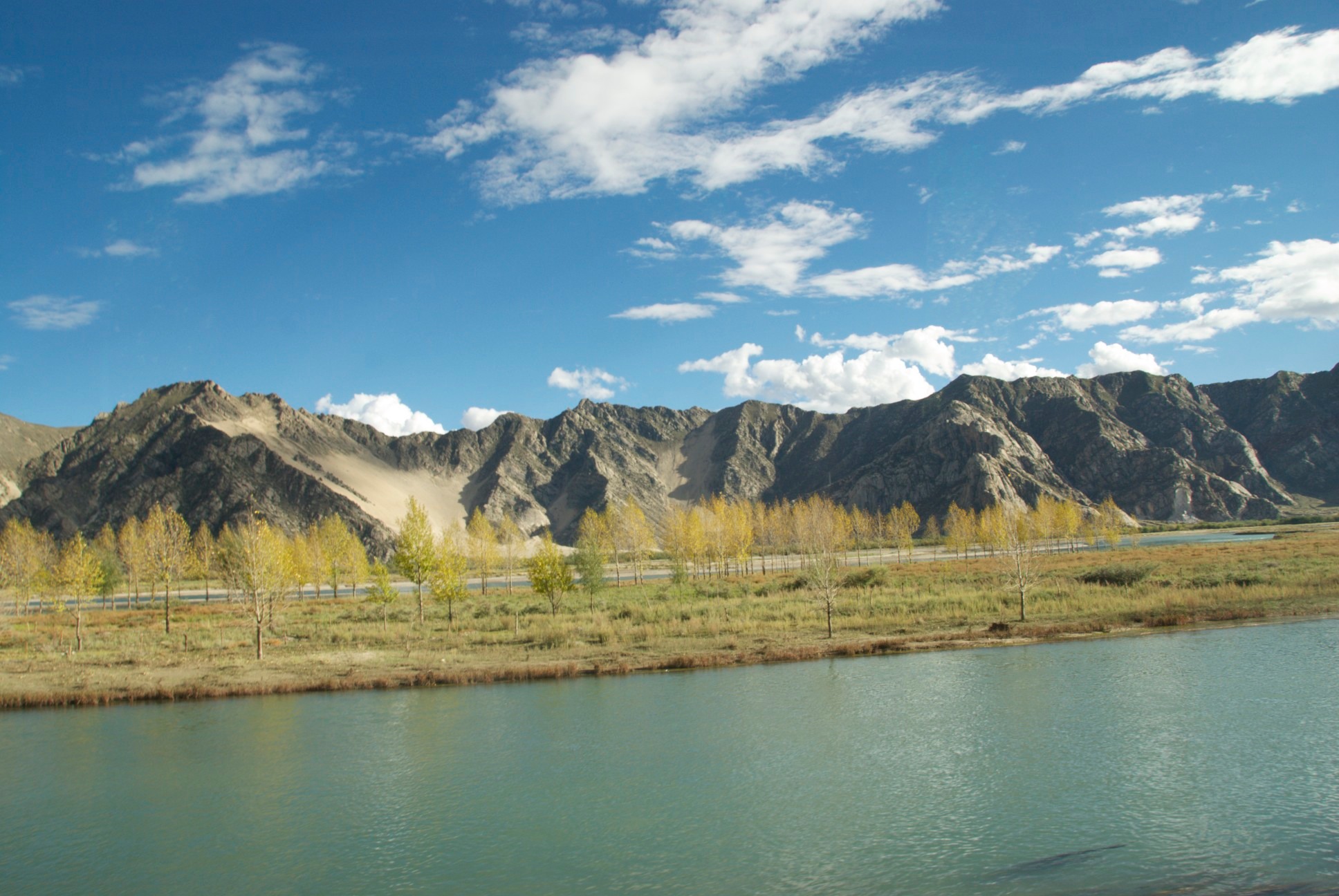Water Wars Over The Brahmaputra?
Copy of Is China progressing with its plans of diversion of water from the Brahmaputra river

NEW DELHI: There are cogent reasons to believe that China might be progressing with its controversial and highly contentious project of diversion of water from the Brahmaputra river in Tibet. Sometimes back an article posted on the official website of the Yellow River Conservancy Commission had advocated the necessity and feasibility of diverting water from some rivers including the Brahmaputra to meet up the challenge of water scarcity in China’s northern and north-western parts. If implemented the project will spell disaster for India and Bangladesh.
China has not come out openly on the matter. On several occasions it denied the existence of any such plan. But the above mentioned article indicated that engineers of China’s Ministry of Water Resources have already completed a feasibility study. In 1999 Jiang Zemin, a former President of China, had announced the grandiose “ Great Western Extraction” plan which would transfer huge volume of water from Tibet to the Yellow river. In 2008, the then Indian Prime Minister Manmohan Singh, had raised the issue with Chinese leadership. But Wen Jiabao, the then Chinese Prime Minister, had replied that the water diversion plan was imperative due to China’s water scarcity.
The Chinese leadership had not overstated the problem but their frank admission only pointed towards building up of a grave source of tension in Indo-China relations. So far as water availability is concerned China is now at the end of its tether as fast paced capitalist development embarked upon by its leadership since the time of Deng Xiao Ping demands more and more use of surface and ground water and it has left the present political leadership with no other option but to look for unconventional replenishment. Already 300 million people in China have no access to drinking water and 400 of the country’s 600 major towns are suffering from water shortages.
This is the result of an unplanned and myopic development policy. While southern China experiences 80 inches of average annual rainfall, northern China receives only 8-16 inches of annual rainfall on an average. But the government of China has allowed burgeoning growth of urban centres like Beijing having more than 20 million people and Tianjin with over 12 million, at this part of the country. As a result ground water levels under Beijing have fallen by 2.5 metres since 1999 and a staggering 59 metres since 1959.
Water scarcity in China has now reached an alarming proportion and this is bound to accelerate regional imbalance in near future. Surprisingly China still possesses 2.8 trillion cubic metres of water which is the fourth largest in the world. But due to the giagantic size of the population, China’s per capita water reserves stand at only 2300 cubic metres. The condition of the northern portion of the country is worse in this respect. It has 44.3 percent of the overall population and 59.6 percent of the arable land- but it has only 4.5 percent of the country’s water resources. As the region’s average per capita water reserve is very low- only 747 cubic metres which is one third of the national average- both agriculture and industry are faced with serious strains here.
So there is no other way for China but to divert huge volumes of water from the south to the north. Towards this end China has a two pronged strategy. The first one- called the South-North Water Diversion Project- would divert 45 billion cubic metres of water from the Yangtze river to the north and the north-west. The first part of it has become operational. The second one aims to lift 50 billion cubic metres of water from the Brahmaputra( called Yarlung Tsangpo in Tibet) and pump it into the Yellow river. This would be a gigantic and ambitious project and would have to overcome many technological challenges. Some Chinese experts have however expressed their reservations about this project due to technical complexities.
But what would China do if it finds the Brahmaputra too difficult to tame? Well, then there is another trans-national river in Tibet- the Indus and its tributaries. If Beijing wants to divert the Indus, then its effect will be felt by a host of Indian rivers like the Sutlej, Kosi,Gandak and Mahakali which get their replenishment from the Indus system.
Beijing should keep one thing in mind. Water scarcity is not her problem alone and the entire Himalayan river basins, supporting 1.3 billion people in Bangladesh,China,India, and Nepal, are likely to experience a fall of 13-35 percent in the annual per capita water availability in the next two decades.According to the Mumbai based Strategic Foresight Group 70 percent of the Himalayan glaciers on which 10-20 percent of the Himalayan rivers solely depend for their replenishments may melt in the next 100 years.
India has realised the threat. Apart from the already sanctioned 800 megawatt hydro electric project on the Brahmaputra, a technical expert group constituted by the previous UPA government has suggested construction of hydro power projects on the rivers Lohit and Subansiri, both tributaries of the Brahmaputra, at sites close to India’s border with China. This is nothing but attempts to challenge Beijing head on and increase the usage of Brahmaputra water so that hard bargains can be done at the time of negotiation.
However pitiable will be the condition of Bangladesh if the two Asian giants start competing with each other on the Brahmaputra issue. In spite of being a rain fed country, Bangladesh is almost totally dependent on external sources of water i.e. on trans-national rivers. It receives around 1106 cubic kilometres of water per year from external sources out of which around 600 cubic kilometres of water come from the Brahmaputra. Bangladesh’s own internal generation is only 105 cubic kilometres. So what will Dhaka do if much of the Brahmaputra water is utilized at the upper reaches?


